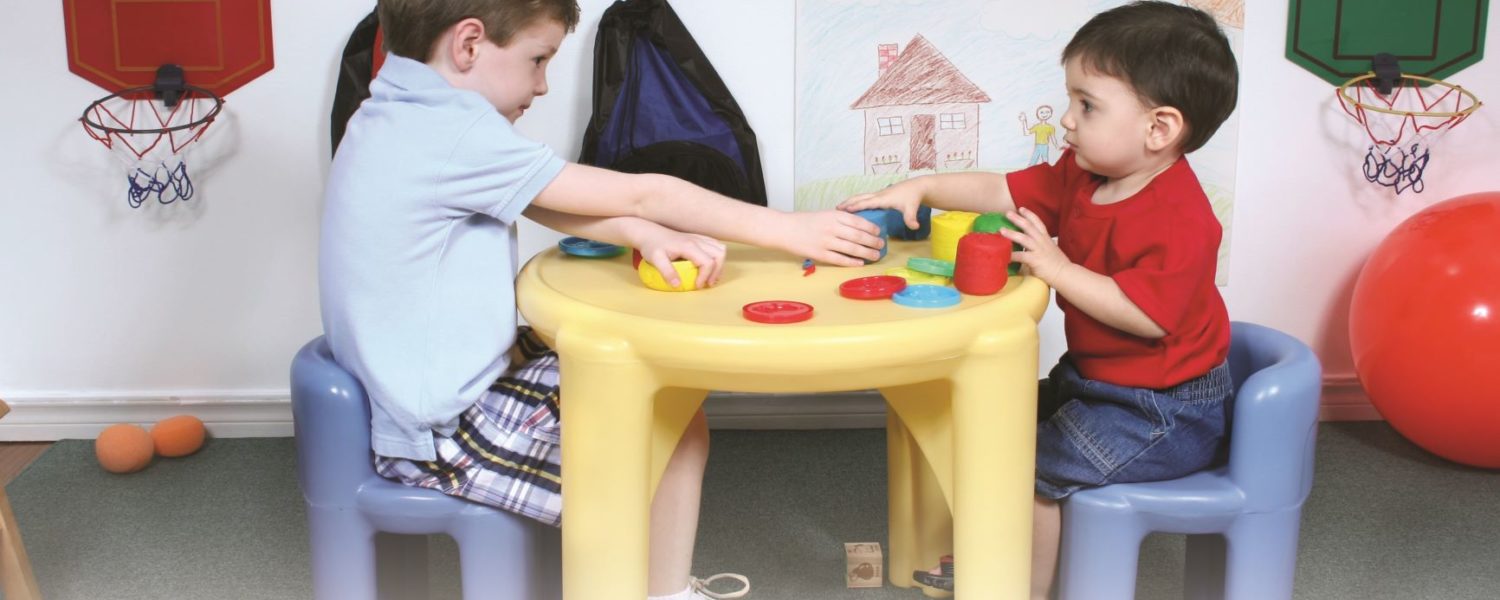This article originally appeared in the June 2005 issue.
By Lynda Freeman
Lynda Freeman has been in children’s ministry for 33 years and is a curriculum consultant, curriculum writer and freelance writer. You can visit her on the Web at www.roundaboutthechurch.com.
We all want our church nurseries to be a place where children are safe and parents are confident in placing their child. While most churches have taken care to develop child protection policies and see to it their nursery facilities are kept neat and clean, too often we could stand to give more care and attention to which toys are in our nursery as well as the condition of these toys.
The potential for injury to the little ones in our care is real and serious enough to warrant our attention, time and effort. We need to do all we are able to do to insure our Nursery Ministries are as safe as possible to better enable us to lay the first foundation in showing the love of Jesus to our youngest children.
The good news is there are really some very simple, yet effective steps we can take to evaluate which toys to select/accept in our nurseries, how to safely store/maintain toys, and to ensure our volunteers are equipped to safely supervise the use of toys by the children in our nurseries.
Selecting/Accepting Safe Toys
First, let’s look at what constitutes a safe toy. Lane Nemeth, founder and CEO of Discovery Toys, suggests five easy to remember points to help determine toy safety –
- Size
Think big when selecting toys for young children as little ones often put toys, and whatever they can get their hands on, in their mouths. Keep in mind that any toy–or part of a toy, such as eyes, wheels and bells–may fall off, be pulled off or chewed off. Then, that toy may become a choking hazard or may be placed in an ear or nose, become stuck and necessitate a trip to the ER for removal. A good rule to follow is if a toy or part is small enough to fit in a cardboard toilet paper tube or is not larger than a child’s fist, it is too small for children who are putting things in their mouths, no matter what age the child is. Remember, bigger is better!
- Shape
Toys with metal or glass parts are not suitable for young children. Check when you accept a toy and regularly re-check to be sure toys with screws, nails or other fasteners are securely fastened and that the toy is in “safe shape” to be played with by children.
- Surfaces
Pay attention to the labels on toys to be sure they are non-toxic and fire-resistant, as well as that the toy has no cracks or holes that could injure small fingers and hands. Be sure the toys have smooth surfaces with no sharp edges, points or splinters.
- Strings
Make sure any strings, cords, ribbons, tails, straps, etc. are not more than 7 inches long, as a young child may easily become entangled and choke.
- Supervision
Pay close attention to the age of child a toy is intended for. If a child plays with a toy they are too young or too old for, the possibility for injury due to misuse increases, as even a safe toy, if used other than intended, may cause injury.
These five guidelines are excellent aids to help us evaluate the safety of toys for our nursery, but to this I would add quality and durability.
It may be tempting to buy inexpensive toys to get more from our toy dollars, but if the toy is made from cheap components, it is more likely to break, not only meaning it will need to be replaced, but increasing the potential for injury from sharp or jagged edges or choking on small pieces. It is better to spend your money on a few, well-made toys that will last and be enjoyed safely for years to come.
Be sure small parts are securely fastened and look for ASTM F963 on the packaging, as this insures the toy meets safety standards relating to labeling, age-intended, non-toxic components, that it is nonflammable as well as identifying toys for children under 3 that may have small parts that could present choking hazards.
Remember these guidelines as you select and accept toys for the nursery. Often church nurseries depend on donations of used toys to supply their nursery with toys. Many used toys are still safe and make excellent additions to the nursery, but before you accept any toy – gently used or new – be sure a designated person from your nursery staff or committee carefully inspects each toy to be certain it meets these guidelines.
Storing/Maintaining Safe Toys
Once you make your toy selections, it is important to care for them to insure they last and continue to be safe for children to play with. Maintaining toys does take extra effort, but not necessarily a lot of time. If you put in place a few relatively simple procedures involving nursery volunteers and even the children themselves, you will find the toys will be kept in top-notch condition without the responsibility landing on just one or two people.
There are three simple steps to caring for toys. First, the nursery is a great place for children to begin to learn simple lessons about helping and being responsible by involving children in picking up toys when they finish playing with them. Make picking up toys fun by singing songs while you and the children pick up toys or by making it a game. Ask children to find a blue toy or a red toy or two toys and put it in the used toy bin. Make helping fun and, in doing so, help children learn to be responsible.
Second, it is important to keep the toys in the nursery clean. If cleaning toys falls to one or two people, it can become an extremely time-consuming and overwhelming chore. It does not have to be this way.
Purchase two wash bins for each nursery for each service. Label one for used toys, and, as children pick up toys, have them place all used plastic toys in the used toy bin. After all the plastic toys have been collected, place the bin on a counter, out of the reach of children, and pour a mixture of 1/4 cup bleach to 1 gallon of water over the toys and allow to soak for a few minutes. Then place the toys in a second bin and rinse with clear water. Place the toys on a towel out of reach and allow to air dry. This process takes minutes, can be part of the volunteers’ responsibilities before they leave the nursery and will help insure safe, clean toys in the nursery.
Recruit a few teens to stop by the nursery after their mid-week youth meeting to place toys on shelves or in designated locations. Fabric toys, obviously can not be soaked each week, but they can be sprayed with Lysol and spot-cleaned as necessary. When a fabric toy needs washing, place it inside a crib mattress sheet and wash with the nursery laundry.
The best way to limit germs on toys is to develop and enforce a sick child policy. Basically, if a child arrives with runny nose or a congested cough, fever or is sick to their stomach, they may not stay in the nursery. This child is ill and needs to be home in bed.
Lastly, continue to regularly inspect toys each month to be sure they continue to meet the safe toy standards you used to select them in the first place.
Supervising the Use of Safe Toys
Take the time to communicate with your nursery volunteers to be sure they understand the importance of properly supervising children as they play with the toys. It can be easy for nursery volunteers to chat with each other and not pay close enough attention to the children as they play. Help your volunteers by encouraging them to supervise and interact with the children as they play. Watch that children use the toys as they are intended and that the toys available to the children are suitable for the age in the nursery.
According to the Consumer Product Safety Commission, the most frequent causes of injury involving toys are from misuse of toys, such as being hit with toys, tripping on toys or falling on toys. Supervising children as they play can greatly cut down or even eliminate this potential for injury.
We have looked at three important, yet relatively easy steps we can take to accept, select, store, maintain and supervise the use of safe toys in our church nursery. There are just a couple other things to consider as they relate to safe toys in the nursery. First, despite all you do to make your nursery as safe as possible, situations may arise where a child is injured, so the following two tips are worth considering. No church nursery is complete without a first aid kit and a poster illustrating how to handle basic first aid. Contact your local Red Cross for information on what to include in your First Aid Kit and to get a free poster for your nursery. I highly recommend training your nursery volunteers in first aid and CPR. Many churches have people in health care who are able to train, or contact the Red Cross or a local hospital and they will help you find someone to provide this training. It is important and most definitely worth it.
The church nursery is not just a place to baby-sit young children so the parents may participate in church. Rather, it is a vital and rewarding ministry to families and young children. We need to do all we can to make our nursery as safe as possible. Paying careful attention to the toys in our nursery is just part of developing an overall safe and effective ministry.











